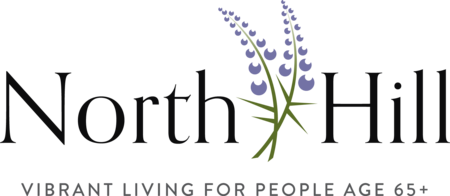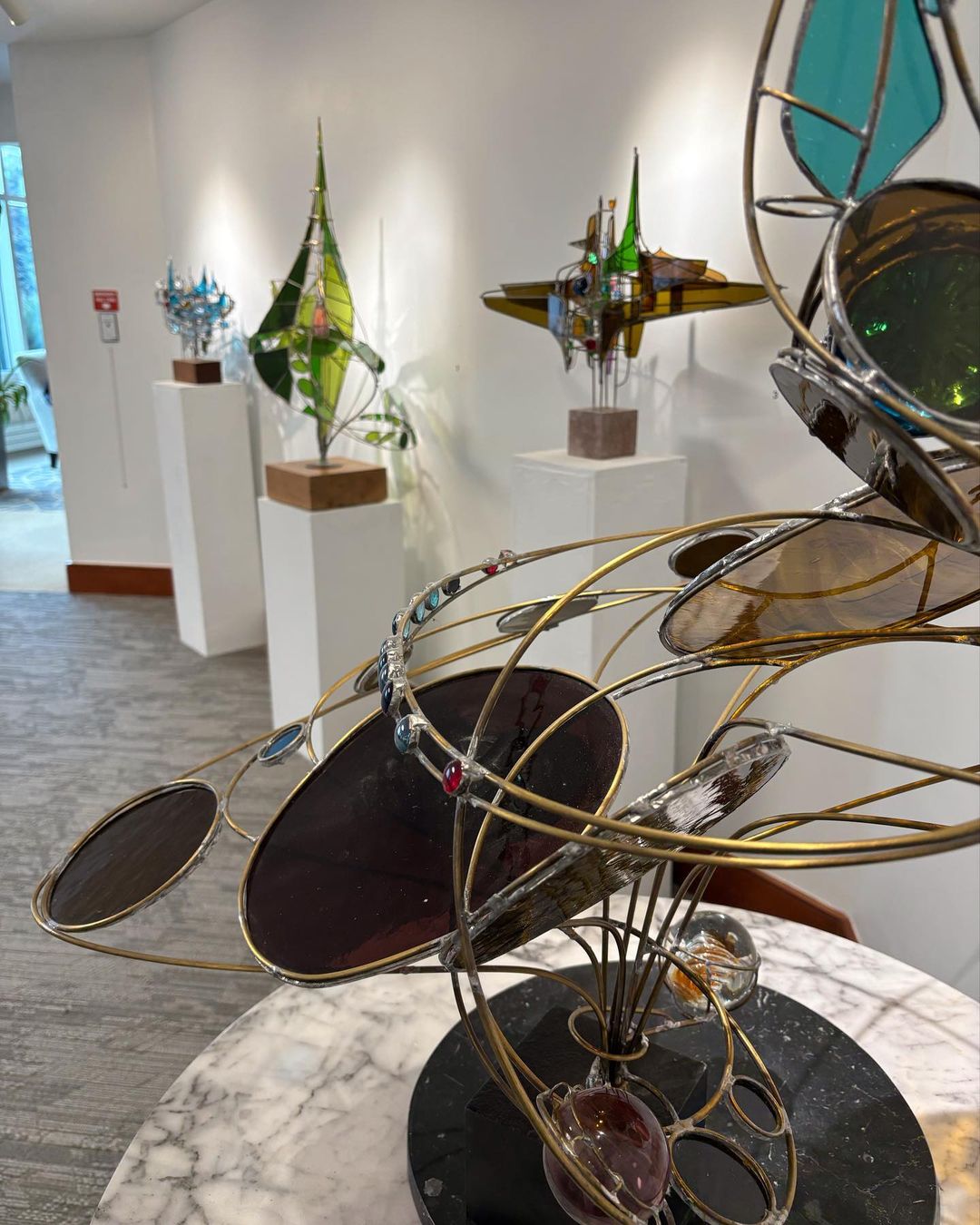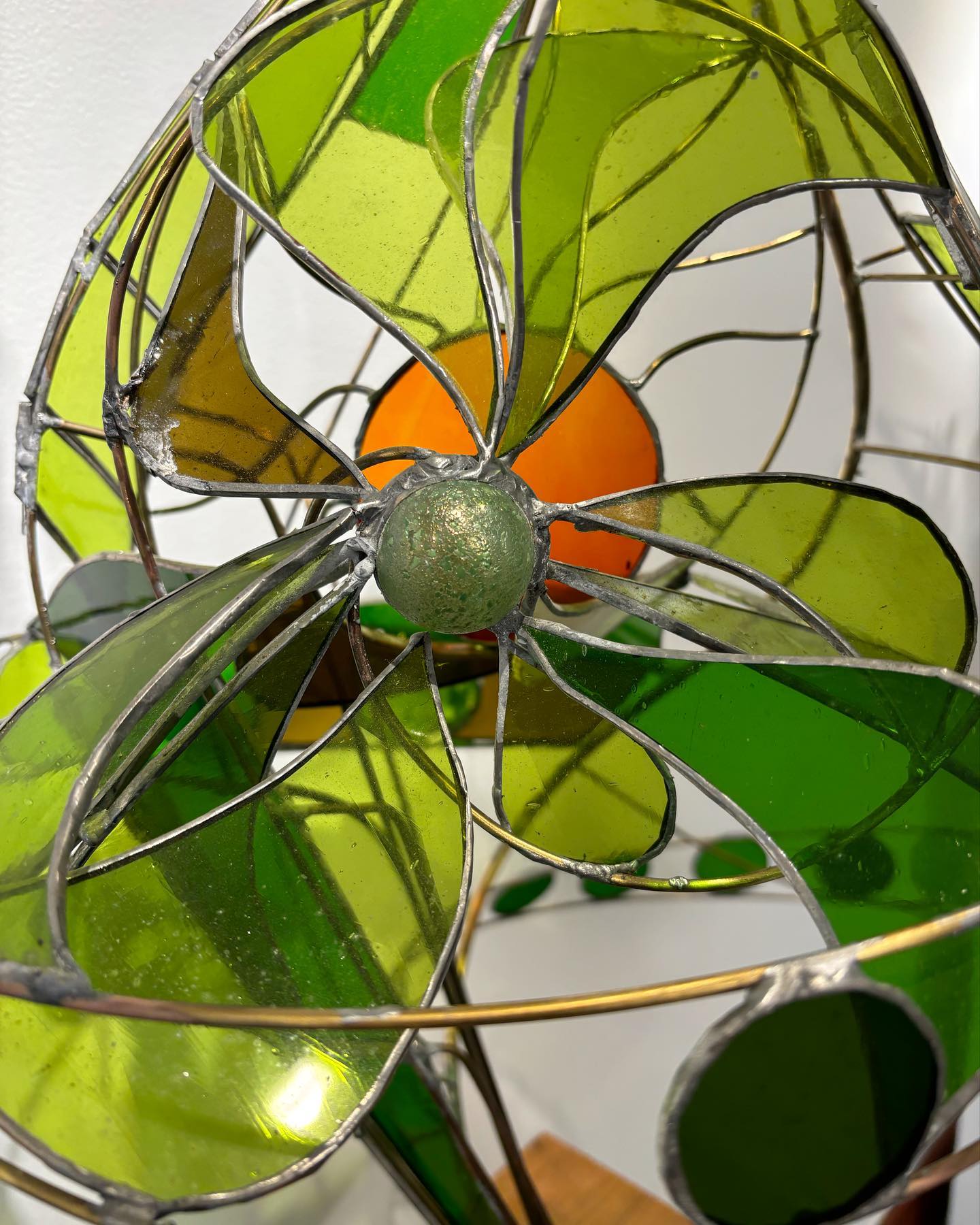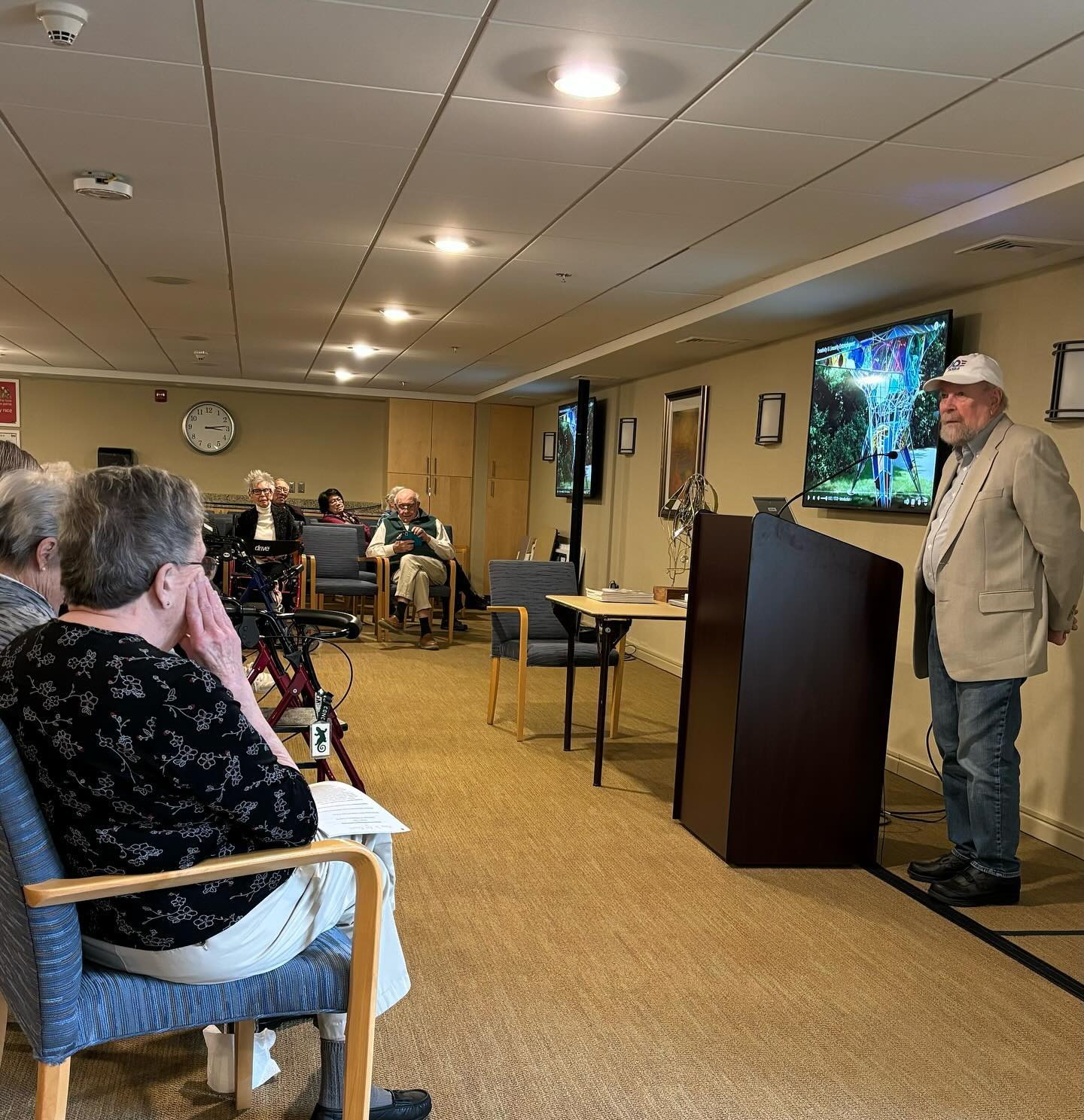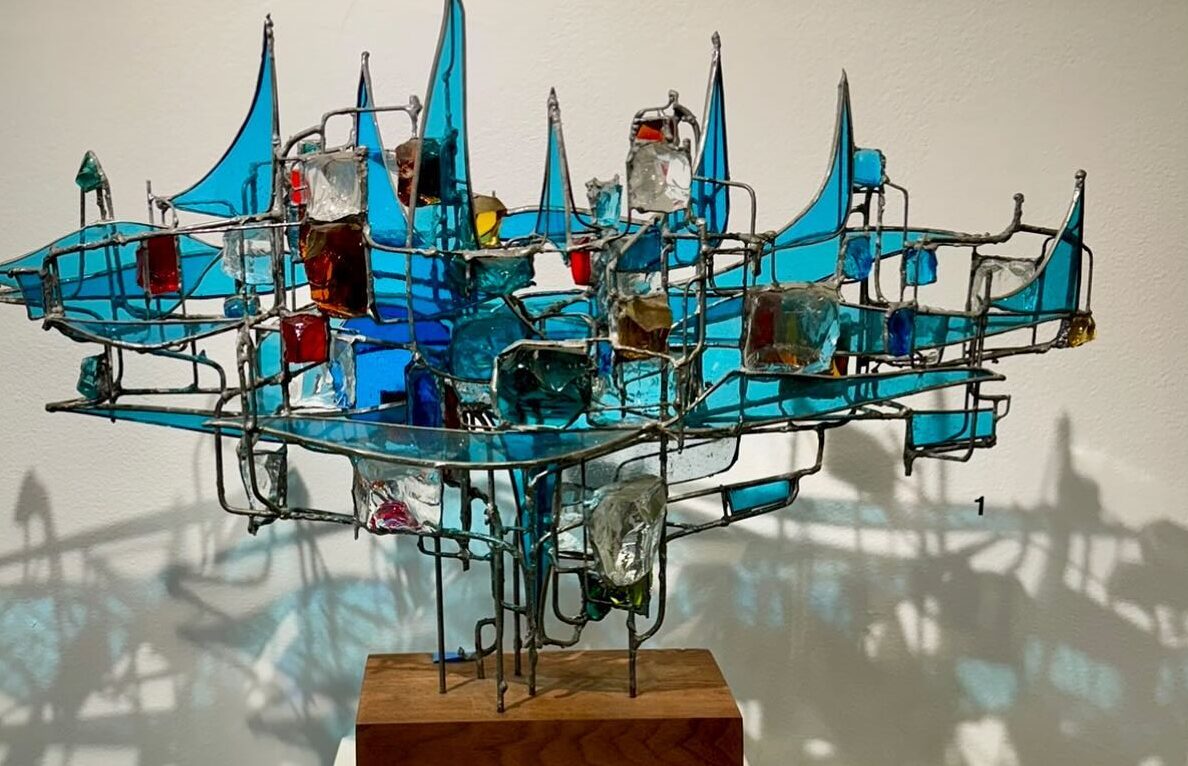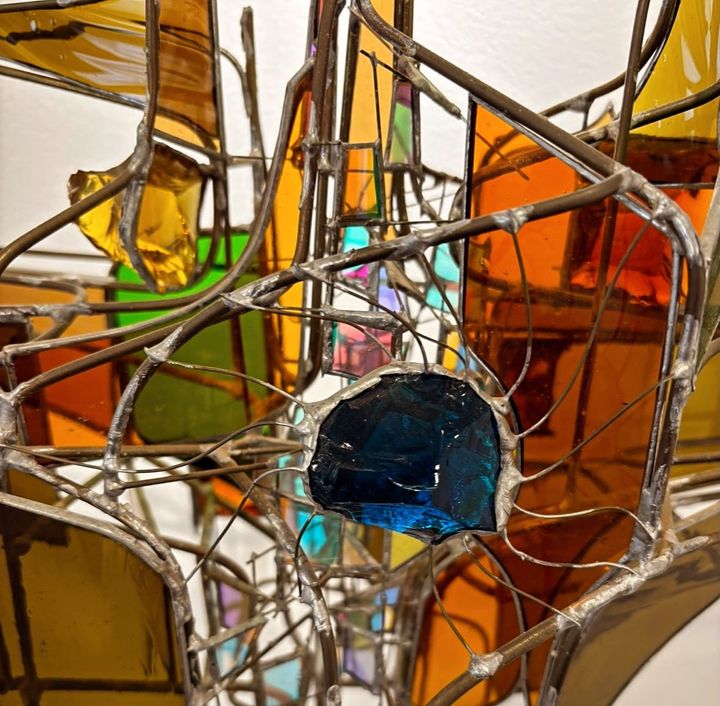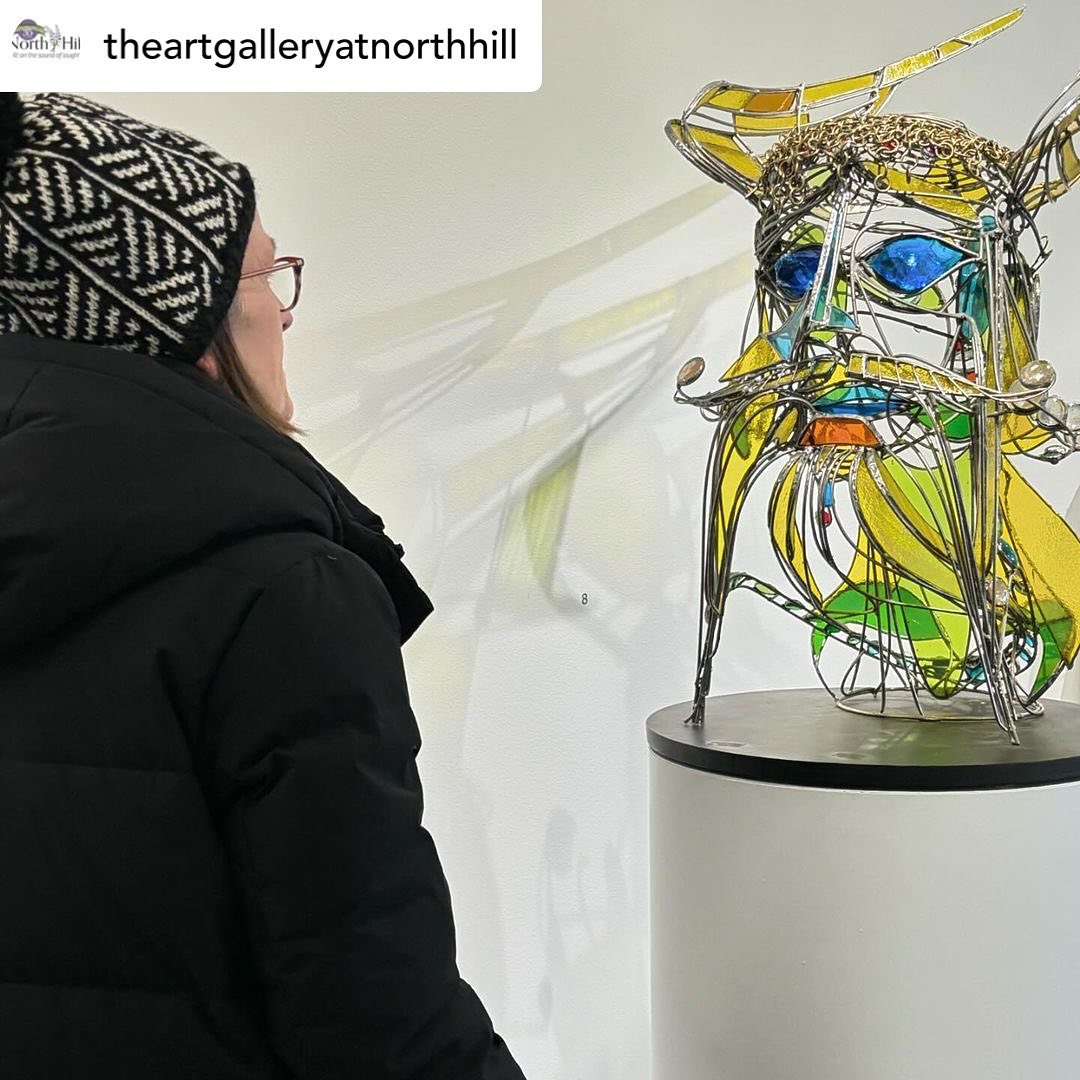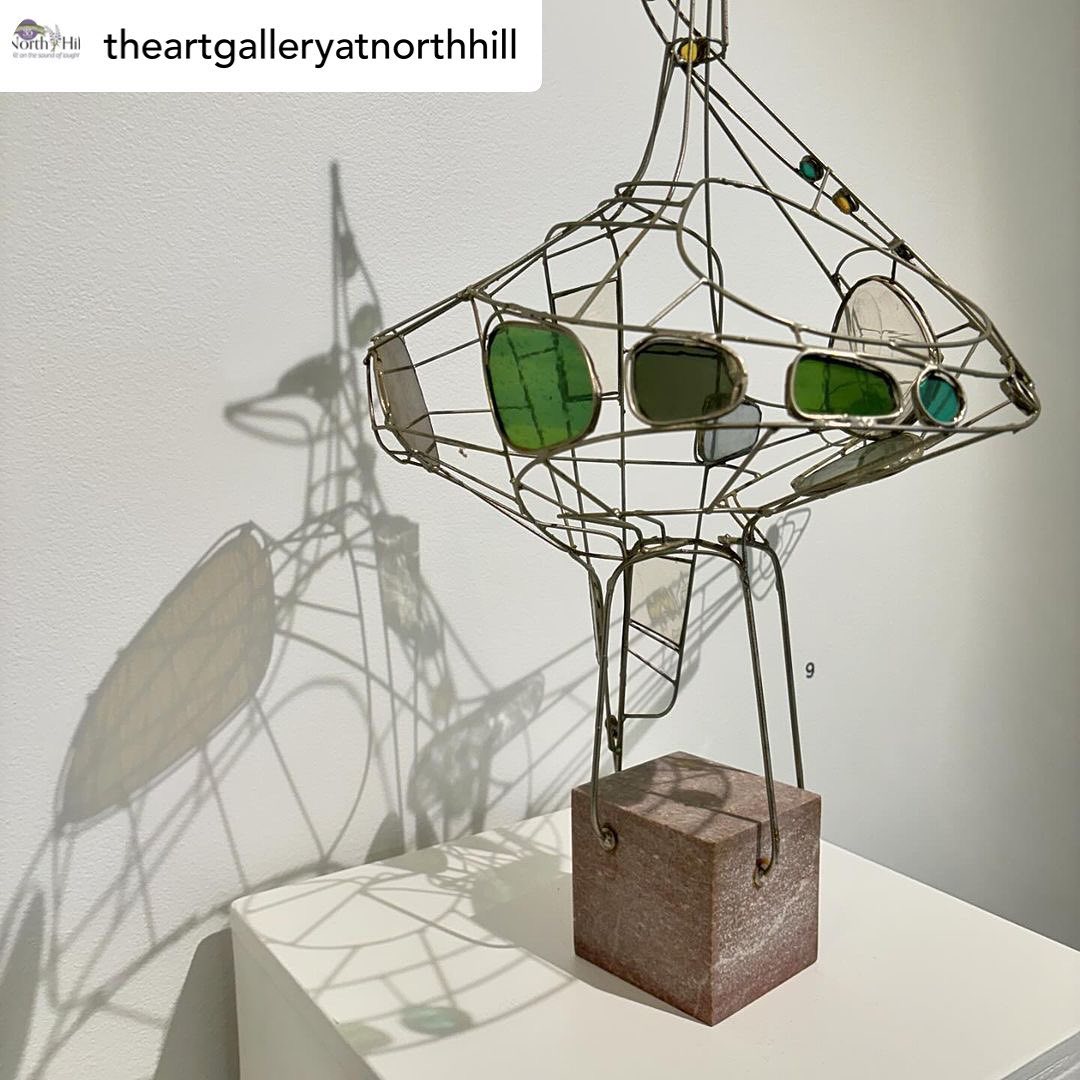Whether the drawings in the caves at Lascaux, or a post-modern abstract in the Guggenheim, art has always nourished and animated the human spirit. So it is here at North Hill, where residents embrace art in all its forms as an essential element of a vibrant, purposeful life.
Our professional art gallery boasts 4 exhibits annually featuring distinguished artists from across the country. Our permanent collection includes works from the Danforth Museum and all past exhibitors.
Scroll down to learn about some of our past exhibits, and watch this space for information about our upcoming exhibit in February 2025.
North Hill’s permanent art collection is now archived in a 4-color catalog.
Download Catalogue HereJoseph Ferguson: Stained Glass and Sculpture
Jan, Feb, March 2024
Joseph Ferguson creates large free standing indoor and outdoor stained glass sculpture that play with form and space and light. Some can be climbed and sat on, some are a surprise in the landscape and all are a feast for the eyes. He was born in 1930, and grew up on a dairy farm in Unadilla, NY. He worked as a junior draftsman for the New York Central Railroad in New York City and attended Cooper Union night school, though that was interrupted by the Korean War. After the war he attended Edinburgh College of Art in Scotland and received an Andrew Carnegie Scholarship to study at the art centers of Europe. He settled in Boston in 1952 and worked at J.G.H. Reynolds Stained Glass before founding Ferguson Stained Glass in Weston, MA in 1970 where he still creates works of art in his large airy studio.
Joe says,”I was schooled in the traditions of Modernism, influenced by British and American sculptors of the late ’50s, and chose stained glass as my medium. I like the intensity of its changing color with the interaction of light. Its challenge was to make it sculptural, free it from its architectural, cathedral settings. I wanted to realize landscape sculpture, like those of Henry Moore and Alexander Calder.”
From a Jan. 2023 article by Cindy Cantrell for the Boston Globe, “He builds a frame, with each piece of stained glass cut to shape and fixed into a supporting structure of brass rod, welded aluminum, steel, or stainless steel. Instead of soldering the pieces together, he separates and superimposes them while inserting a brass rod at varying levels for added strength. Light gleams between the pieces, with thick fractured glass or blown forms added for dimension. Despite now leaving the heavy lifting of installations to sons Chris, Mark, and Eric, Ferguson has no intention of retiring. He continues to live by a lesson learned from an older engineer at New York Central Railroad who repeatedly and miserably voiced his wish for a lower retirement age. In what Ferguson called a “singular moment of personal illumination,” he wrote a vow to pursue art on a piece of paper that he carried in his wallet for years. “I would draw
pictures and make things,” he said, “not spend my life waiting for retirement.”
Conley Harris, In the Landscape
Conley Harris paints gardens, forests and rivers, sometimes life-sized. He says “I embrace the sublime beauty and radiating stillness found in pure landscape.” He has traveled throughout New England, Great Britain and Japan and his paintings evoke a very specific sense of place. His economy of detail and loose, luscious brushwork move you quickly along paths in gardens, woods, and near streams. Through many years of plein air painting, drawing and professional art teaching, he has developed a very distinctive style. You could walk right into his large paintings and have a transcendent experience of your own.
Conley has been in many solo and group shows and he hosts occasional themed group pop-ups with other artists in his large Washington St. studio in Boston. He has taught at the University of Wisconsin, Madison; BU Fine Arts; and UNH. His work is in the Fogg, The MFA, the Philadelphia Art Museum, Fidelity, Citibank, and many other public and private collections.
Laura Petrovich Cheney
June – September 2023
Laura Petrovich-Cheney’s work is a captivating exploration of contemporary issues that seamlessly blends craft and fine art with environmental concerns surrounding climate change. Her recent sculptures inspire a dialogue between individual and environmental matters, drawing inspiration from feminism and traditional women’s arts such as needlework and quilting. She repurposes discarded debris to create and compose her sculptures, searching for traces of personal histories, identity, and humanity.
Laura’s unwavering dedication to her artistic vision has led to numerous solo exhibitions, including the 2019 Against the Grain exhibit at Berea College in Kentucky, Memory and Material at the International Quilt Museum in Nebraska in 2018, and What Remains at the Fuller Craft Museum in Massachusetts in 2017. Her latest exhibit, Weathered Shapes, Wooden Quilts, is currently on display at the Boston Children’s Museum.

Laura’s work has been featured in countless national and international publications, including television, books, magazines, podcasts, and NPR. Her accomplishments have earned her grants from esteemed institutions such as the National Endowment for the Arts, National Park Service, Geraldine R. Dodge Foundation, and the Clark Hulings Fund for Visual Artists. In 2017, she received the New Jersey State Council on the Arts Fellowship in Sculpture, followed by the Artist Fellowship in Crafts from the Massachusetts Cultural Council in 2021.
Born in Philadelphia and raised in Haddonfield, New Jersey, Laura spent twenty years living in Asbury Park before Hurricane Sandy prompted her move to Marblehead, MA, with her husband and dogs. She holds a BA in Fine Arts and English Literature from Dickinson College, an MS degree in Fashion Design from Drexel University, and an MFA in Studio Arts from Moore College of Art and Design. In addition to teaching part-time elementary-level art, Laura also presents lectures and workshops for adults.
Laurie Kaplowitz Neo Cambrian Life
Through June 2023
Laura Kaplowitz uses leaves and blossoms and other natural materials in her multimedia paintings. And she uses the figure to explore nature and existence.
Laurie says, “this body of work is all about rebirth, regeneration, and new hybrid life forms. The ‘umbrella’ name of the series is Neo-Cambrian Life, a neologism and play on words from the Cambrian Explosion, which set forth the evolutionary burst of life forms that we know today.” An inveterate traveler, she has witnessed people worldwide using flora and fauna to decorate their faces and bodies and realized that the impulse to adorn ourselves crosses all boundaries of geography and time, and is hardwired into our DNA. In this work, the organisms – birds, flowers, butterflies, leaves, humans fuse, and are reborn as one.

Laurie’s work has been exhibited in galleries in Boston, Los Angeles, New York, Dallas, Miami and San Francisco, and in the DeCordova Sculpture Park and Museum; the Fogg Art Museum; the New Bedford Art Museum; the Boston Museum of Science; the Fitchburg Art Museum; the Albright-Knox Art Gallery; The Currier Gallery of Art; the Katzen Arts Center in Washington, DC, and the Woods Hole Oceanographic Institute. She has created commissioned work for Princess Cruise Lines, Royal Caribbean Cruise Lines, The American Meteorological Society and kaiser Permanente. Her work is in many private and corporation collections.
